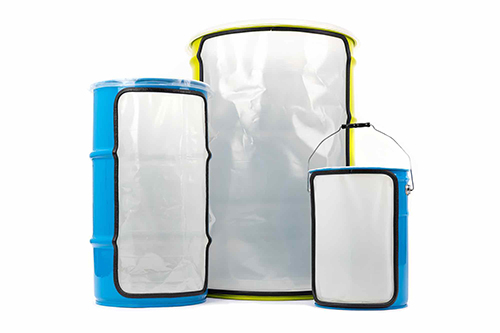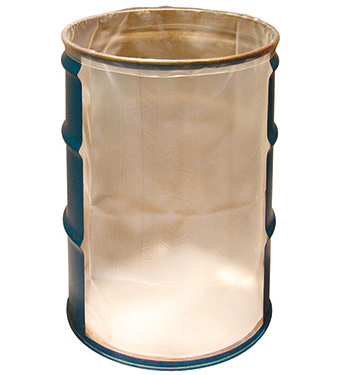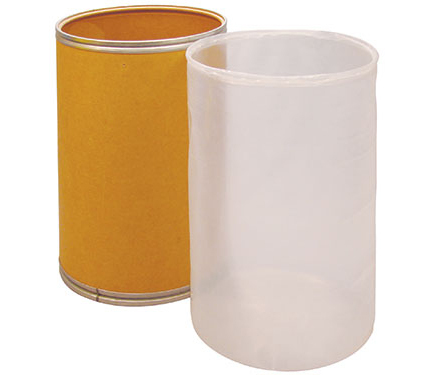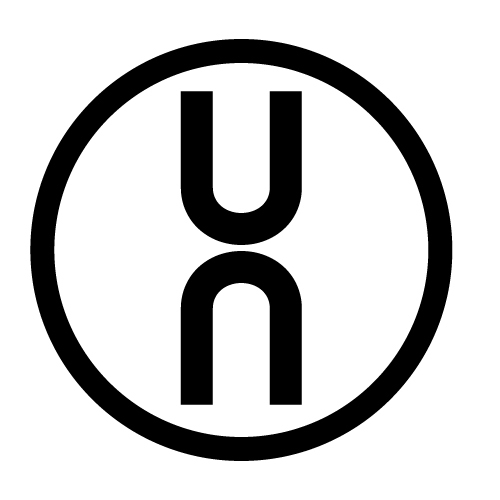What You Need to Know about Adding Liners to Drums and Pails
If my drum is UN-certified without a liner, and I add a liner to it, is the drum still UN-certified?
We are asked this question frequently and the simple answer is no—with the addition of a liner, the original UN-certification is null and void and the package needs to be retested.
The Full Discussion
It’s important to understand that any UN-rated container—whether it be a drum, pail, bag-in-box, etc.— that has a UN rating must be retested if any changes are made to the original packaging that initially got tested, approved, and UN rated prior to that change. So, if a drum without a liner initially passed the certification and you have made a change by adding a liner, it negates the UN rating and you will have to retest. Those changes mean ANY change: change in liner, gasket, new fitment for a bag-in-box … it has to pass the certification test again.
Another question we are often asked is: are any changes okay? The requirement for re-certification exists for any functional changes that could affect the performance of the package: fitment changes, interior sprayed on lining changes, the addition of liners or change to a different liner, etc. Variables such as the exterior color of the drum’s paint color is not a functional change that would affect the performance of the package.
The Good News
In the case of liners for drums, the rationale is that the actual/original package gets the certification—liners are a component to the package. The good news is that CDF has product offerings that have proven to work well in the testing and certification process. This helps customers pass the test to attain their rating. We have existing customers that have different sizes and types of containers—large tanks, to drums and pails—and we supply liners to meet their specifications. When they re-certify the packaging to include the liners, we can offer guidance through the process.
There is a process companies must go through when they need a liner to put into a currently UN-rated drum. The first step involves the customer working out a solution with the drum supplier. The drum supplier could be the actual drum manufacturer, or a distributor for the manufacturer. If there is ever any doubt, the drum manufacturer should be contacted (end-users commonly work with their drum manufacturer to ensure all packaging it is certified). When CDF is involved with working on a solution to add a liner to the equation, we work with the drum manufacturer.
The next step is for the container manufacturer to touch base with compliance and regulatory personnel at the end user’s facility. Our involvement is generally with the sales team at the container manufacturer or directly with the end user. After we inform the end user that there is no such thing as a UN-rated liner, we work with them and sample them with liner options that will help them achieve the specification needed to get the package to pass UN testing. (In fact, when it comes to FDA-approved liner questions, there is not an FDA-approved liner either; the liner is made out of FDA-approved raw materials—a subtle, but important distinction.) It is incumbent upon the customer/end user to make all arrangements to pass the certification test. All responsibilities for certification rest with them. A certain number of drums need to pass testing. Once we produce the liners they need, we help by sending what is necessary for testing purposes.
Viable Packaging Solutions
An example of a complete packaging unit that meets all UN standards is our UN-certified bag-in-box packaging. Because it was tested and certified as one functional unit, it is good as is. One of the reasons the liners we make for customers helps the process move smoothly is that we are well versed in this process because we’ve been through it with our UN-certified bag-in-box product.
While we provide a superior UN-certified flexible packaging solution, we also find that customers need UN-certified packaging for drum and pail containers—and they want liners with them. They will have to go through re-cert process with the addition of a liner. CDF’s UltraLiner is a perfect solution for any company that needs to add a liner to drum packaging that must pass UN certification.
Take a look at the benefits of CDF’s UltraLiner:
- Specifically designed for UN performance tests; each user must acquire UN certification independently
- Blow molded liners are CDF’s best-performing drum liners
- Durable design can withstand the most rigorous pumping and mixing
- Environment-friendly packaging helps users to reach sustainability goals
- Blow molded for seamless protection
- Ensures the absolute purity of your product
- Provides protection against drum corrosion
- Reduces drum cleaning and reconditioning costs
Testing Requirements
If you aren’t sure if you are required to have UN-certified packaging, here’s a basic run down of why this testing is in place: the United Nations has set standards for the classification, packaging, marking, and labeling of dangerous goods, which cover road, rail, and sea. These are carefully calibrated to encompass the standards of major countries and international organizations, like the United States and the European Union. All packaging to be used for dangerous goods—domestically and internationally—must be tested to these standards and pass a certification process administered by a third party.
Many people think that because it is a United Nations standard, this certification only applies if transporting overseas. That is an incorrect, dangerous, and (could be) costly assumption. The “road, rail, and sea” clause pertains to domestic transport in the U.S. The Department of Transportation (DOT) is the regulatory body that administers truck and transportation checks. They check containers and the subsequent ratings on them—and will fine parties if they fail compliance. Companies (drum manufacturers, distributors, and end users) need to be vigilant and always be aware of package changes so they can ensure their package is compliant. Fines and legal liabilities aside, if you are transporting dangerous or hazardous goods, you want to be doing so safely—for yourself, your company, and the environment. 
To receive its final UN certification, each product must undergo rigorous testing criteria. As stated above, the UN-certified bag-in-box packaging solution CDF designed underwent—and, of course, passed—all the testing criteria outlined below.
General testing criteria include:
- Four tests that are designed to challenge the integrity of the packaging in stressful environments and conditions.
- When testing, water is the liquid that is used in packaging with inner receptacles (such as bag-in-box containers).
- All inspections, measuring, and test equipment that can affect product quality is calibrated and adjusted at prescribed intervals, or prior to use, and is traceable to National Institute of Standards and Technology (NIST), using American National Standards Institute (ANSI) Z540 as an overall guide for calibration certification.
- In general, there are at least three identical package samples tested for each test (more for the drop and Cobb tests).
- Testing is completed by an independent DOT UN third-party certification agency.
The four tests are:
- Drop
- Stacking
- Vibration (for 49 CFR only)
- Cobb
The Testing
1) Drop Test
This is the standard test that drops loaded containers by free fall. Packages are dropped on all sides: on the bottom, top, the long and short sides, and in the top and bottom corners. Side and corner drops are conducted to assess the impact at the manufacturer’s joint of the box. Any leakages or deformations are noted (and assessed for potential risks). This test meets American Society for Testing Materials (ASTM) D5276, ASTM D7790, and International Organization for Standardization (ISO) 2248 industry standards.
Drop test criteria cover:
- Packaging that contains liquid; each package does not leak.
- There can be no damage to the outer packaging likely to adversely affect safety during transport. Inner receptacles, inner packaging, or articles must remain completely within the outer packaging and there must be no leakage of the filling substance from the inner packaging.
- Any discharge from a closure is slight and ceases immediately after impact with no further leakage.
- No rupture is permitted in packagings for materials in class 1 which would permit spillage of loose explosive substances or articles from the outer packaging.
2) Stacking Test
The standard method tests for compression resistance of a container under a constant load. Packages are stacked for 24 hours and dead load weight is applied to assess whether, under the stress of weight, the packaging can withstand any leakage and damage. Guided load tests require an additional “stacking stability” test. This test meets ASTM D4577 and ISO 2234 industry standards.
Stacking test criteria cover:
- There must be no leakage of the filling substance from the inner receptacle, or inner packaging.
- There can be no deterioration that could adversely affect transport safety or any distortion liable to reduce the package’s strength, cause instability in stacks of packages, or cause damage to inner packagings that is likely to reduce safety in transport.

3) Vibration Test
This is the standard method for vibration testing of shipping containers. Packages are placed on the platform of an L.A.B. 6000 transportation simulator for one hour that vibrates at a fixed, low frequency of 4.1 Hz. This test meets ASTM D999 and ISO 2247 industry standards.
Vibration test criteria:
- Immediately following the period of vibration, each package must be removed from the platform, turned on its side, and observed for any evidence of leakage.
- A packaging passes the vibration test if there is no rupture or leakage from any of the packages.
- No test samples should show any deterioration which could adversely affect transportation safety or any distortion liable to reduce packaging strength.
4) Cobb Water Absorption Test
The Cobb test determines the water absorptivity of paper, cardboard, and corrugated cardboard. Five samples of packaging material (5” x 5” per piece) are weighed dry, then placed on the Cobb tester. A sealed vertical cylinder is placed on the product, which rests on a rubber mat supported on a steel plate. Approximately 100ml of water is poured into the cylinder, then poured out after 30 minutes. Using blotter paper, excess water is removed from the testing material, which is then weighed again while wet. This test meets ISO 535 industry standards.
Cobb test criteria:
- An increase in mass greater than 155g/m2 over the 30-minute duration represents an unacceptable level of water resistance.
CDF Solutions
With our vast selection of products, we’re happy to make it easier for you to transport a wide array of goods domestically and internationally. You can get them there securely, sustainably, and compliantly.
We’d like to help! Contact us now to speak to one of our specialists!
